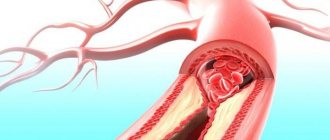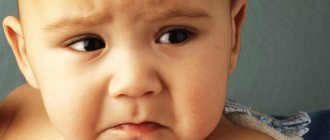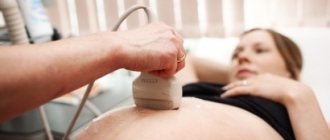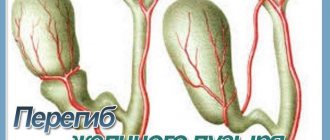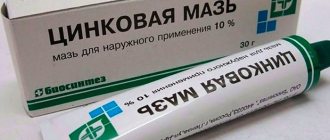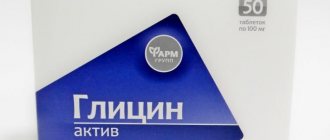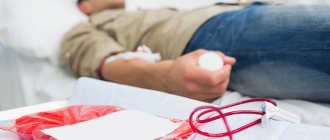Many parents experience neonatal jaundice. This is especially true for premature babies; it develops in more than 80 percent. But this is also a common occurrence in infants who were born at term - it occurs in 50-60 percent of cases.
Jaundice develops in the first few days after the baby is born, and a change in skin color usually becomes noticeable on days 3-4, just when the mother and baby return home from the hospital.
Why is this happening? It's all about bilirubin. In any person, it is formed during the breakdown of red blood cells (blood cells that are responsible for transporting oxygen) throughout life and is easily eliminated from the body with the help of the liver. But in a newborn, it, like many other body systems, has not yet fully matured, so the baby’s liver does not yet have enough enzymes to break it down and eliminate it. And the level of hemoglobin in the blood of a newly born baby is quite high. As a result, bilirubin accumulates in the blood, and the newborn’s skin turns yellow. The whites of the eyes may also become stained.
At the same time, the child feels well. This is the so-called physiological jaundice of newborns, which does not require treatment and completely goes away on its own by the end of the first month of life. But pathological jaundice of newborns also occurs. This is already a very serious condition that can have negative consequences for the child. Such jaundice requires mandatory treatment.
Causes of jaundice in newborns
Unlike physiological, pathological jaundice usually develops in the first hours after the baby is born. Darkening of urine and discoloration of feces, anemia, and pale skin may occur. The bilirubin level is very high - above 256 µmol in children born at term, in premature babies - above 171 µmol.
“Pathological jaundice can be caused by several reasons,” says pediatrician Anna Levadnaya, PhD, author of a blog about pediatrics on Instagram @doctor_annamama. – The most common is increased breakdown of hemoglobin due to Rh conflict or blood group conflict between mother and child. Jaundice can also be caused by liver pathology or pathology of bile excretion into the intestines. In addition, jaundice may be a sign of an infection, hypothyroidism (occurs due to decreased thyroid function), polycythemia (increased levels of red blood cells in the blood), intestinal obstruction or pyloric stenosis (this is a congenital narrowing of the stomach before entering the intestines, which makes it difficult for food to pass through into it). It can occur when taking certain medications and for other reasons.
Newborn jaundice from breast milk also occurs, when the baby’s bilirubin level increases due to the entry into the baby’s body of certain hormones that are contained in mother’s milk. This type of jaundice can last up to 6 weeks. If, when breastfeeding is discontinued for 1-2 days, the bilirubin level begins to decrease and the yellowness disappears, then this diagnosis is made. But if the dynamics are positive, stopping breastfeeding is not required; it resumes after 1-2 days. During the pause, the mother must pump in order to maintain lactation at the required level.
Why does jaundice appear?
Here, bilirubin is primarily to blame . What is it and where does it come from? It's quite simple. A child who has not yet been born has special blood with special (fetal) hemoglobin. It carries oxygen through the baby's blood vessels. When a baby is born, he begins to breathe through his lungs. And then the composition of the blood changes: “live” hemoglobin appears in it, and fetal hemoglobin is destroyed. This is where bilirubin is formed. The child does not need it, and the little body begins to get rid of it.
This is a very difficult task for a child. You can't just remove bilirubin. First, it enters the liver and is mixed there with special enzymes, then dissolves in urine and is then easily excreted. If the liver cannot cope and there is a lot of bilirubin in the blood, jaundice will begin.
The causes of pathogenic jaundice are completely different. They are most often caused by a violation of the outflow of bile from the body due to the following conditions:
- blood group incompatibility;
- Rhesus conflict;
- viral liver damage;
- genetic metabolic disorders;
- hereditary diseases;
- hormonal disorders;
- mechanical damage to the biliary tract or liver.
VIDEO:
Norm of bilirubin
In the blood of a newborn baby, bilirubin should be from 8.5 to 20.5 µmol/l (micromoles per liter). The unit of measurement is quite complex, but you don’t have to delve into it. If you're really interested, the blood test takes place at the molecular level. If the results of the analysis show that the bilirubin content is slightly higher than normal, the doctor understands: the baby’s body does not have time to cope with the load. True jaundice occurs when the bilirubin level exceeds 35 µmol/l.
And yet she is different...
Why jaundice appears is already clear. Why do you generally have difficulty removing bilirubin? Could this be a sign of pathology? Unfortunately yes. Doctors distinguish two groups of jaundice – physiological and pathological. Let's look at all types of jaundice from the rarest to the most common.
Treatment of jaundice in newborns
Physiological jaundice of newborns, as we have already said, does not require treatment. Sometimes pediatricians recommend supplementing such babies with water, but only if lactation is established and using a spoon, not a bottle.
As for pathological jaundice of a newborn, it requires mandatory treatment, which is prescribed by a doctor.
Phototherapy is considered the most effective treatment for this condition today. For this, a special lamp with “blue” light is used: under the influence of ultraviolet radiation, bilirubin breaks down and is excreted from the newborn’s body with urine and feces. The intensity and duration of phototherapy depends on the baby’s body weight at birth and the level of bilirubin, which is constantly monitored. As a rule, three-hour sessions under the lamp are prescribed with a break of 2-3 hours. The newborn must be undressed, but the eyes must be protected; in boys, the genitals must also be protected.
In severe cases of neonatal jaundice, when the baby's life is at risk, a blood transfusion may be prescribed.
— It is important to note that now most experts agree that the prescription of sorbents, drugs such as phenobarbital, Essentiale, LIV-52, abolition of breastfeeding, ultraviolet irradiation (ultraviolet blood enrichment), electrophoresis or excessive infusion therapy for jaundice are ineffective (and for phenobarbital and not safe) – says Anna Levadnaya.
We often encounter such a phenomenon as yellowing of the skin in newborns. Is this a cause for concern? Should I treat it or will it go away on its own?
Diagnostics
If there are suspicious symptoms or obvious manifestations of jaundice, the first doctor you should visit with your newborn is the pediatrician. The specialist will conduct an inspection and prescribe the necessary checks. You can also contact a neonatologist who specializes in pathological conditions of children.
Since jaundice does not indicate the underlying cause of the disease, the history will include palpation examinations and tests.
The most important indicator of the disease will be the results of a general and biochemical blood test. The first will show the presence of anemia, a low platelet count or an increase in young red blood cells. The second will give a picture of increased cholesterol, increased liver enzymes, and decreased protein levels. All this will indicate certain types of jaundice.
Also, a mandatory test will be to donate blood for markers of viral hepatitis.
Bilirubin in newborns µmol/l:
| Age | Norm | Jaundice |
| Premature 3-5 days of life | <171-205 | 50-120> |
| Newborns at 1 day | <34 | 70-80> |
| Newborns up to 2 days | <149 | |
| Newborns up to 5 days | <205-225 | |
| Over 1 month | 3,4-21 | 34> |
Jaundice in newborns, the causes of which are not related to the natural adaptation of the baby, will also require urine and stool testing. A urine test is necessary to check the degree of staining. With jaundice, it may have a dark yellow, brown or greenish tint. You need to collect urine from a newborn using special diapers after a mandatory hygiene procedure.
Stool analysis is also very informative in diagnosing pathology. Normally, green stool is acceptable in the first week of a baby’s life, and liquid yellow or light brown with admixtures of solid particles up to six months of age. If the stool has become lighter or more transparent, then the presence of pathological or mechanical jaundice can be assumed.
Additionally, an ultrasound scan of the liver, bile ducts and spleen may be prescribed.
What is jaundice in newborns?
Jaundice is a yellow discoloration of the skin, sclera and mucous membranes due to the deposition of bile pigments in them. Fat-soluble bilirubin, which is formed during the breakdown of red blood cells, accumulates in the skin.
The liver does not have time to neutralize decay products. Therefore, an excess amount of this pigment appears in the blood.
Bilirubin is:
- unconjugated or indirect. It is fat soluble;
- conjugated or direct. This bilirubin is water soluble.
General information
Neonatal jaundice is a neonatal syndrome characterized by a visible icteric discoloration of the skin, sclera and mucous membranes due to increased levels of bilirubin in the baby’s blood. According to observations, in the first week of life, neonatal jaundice develops in 60% of full-term and 80% of premature infants. In pediatrics, physiological jaundice of newborns is the most common, accounting for 60–70% of all cases of the syndrome. Neonatal jaundice develops when bilirubin levels increase above 80-90 µmol/l in full-term infants and more than 120 µmol/l in premature infants. Prolonged or severe hyperbilirubinemia has a neurotoxic effect, i.e. causes brain damage. The degree of toxic effects of bilirubin depends mainly on its concentration in the blood and the duration of hyperbilirubinemia.
When is neonatal jaundice considered severe?
- They appear on the first day of life.
- For viral and bacterial infections.
- In the presence of hemorrhage.
- In case of incompatibility of mother and child by Rh antigens and blood group.
- In case of prematurity or immaturity of the newborn.
- With insufficient nutrition.
- If older children in the family have jaundice.
Jaundice in a child begins from the face. The higher the bilirubin level, the lower the color (yellow) of the body.
Jaundice has a bright yellow, even orange color due to indirect bilirubin and a greenish or olive color due to direct bilirubin. The difference is clearly visible with severe jaundice.
Pathological jaundice occurs:
- conjugation for liver enzyme deficiency;
- hemolytic when changing the normal structure of hemoglobin and red blood cells;
- hepatic for liver diseases;
- obstructive, or mechanical, jaundice when the normal outflow of bile is disrupted.
If jaundice worsens, symptoms of hemolysis, or infections occur, a laboratory blood test is required. Total bilirubin, direct and indirect, blood type and Rh factor are determined. A microscopy of a blood smear is performed to determine the percentage of reticulocytes and a Coombs test. To determine the level of bilirubin, non-invasive transcutaneous determination of bilirubin is used.
This is the determination of pigment using a reflectance photometer, which, based on the color of the skin, determines the level of bilirubin in the blood.
Photo of a child suffering from jaundice
Some pathological changes in the circulatory system and liver damage cause a disease such as jaundice in children. The cause is excessive accumulation of bilirubin in the blood, which is a breakdown product of red blood cells.
In case of illness, excess amounts are excreted by the kidneys and through the skin. As a result, the skin and eyes with jaundice have a yellowish tint. Children suffer from physiological jaundice, which is characteristic only of newborns, or pathological jaundice - in older children.
Pathological jaundice in a child (photo 2) has 3 types:
Symptoms of jaundice appear quickly in children. The main and most striking sign is yellowness. The skin of the face, neck, and hands acquires a yellow tint. A coating of the same color appears on the tongue. The sclera of the eyes also turn yellow.
Other symptoms of the disease include:
- Skin itching;
- Muscle pain;
- Weight loss;
- Chills;
- Dyspeptic disorders;
- Change in color of stool.
Signs of jaundice are not difficult to diagnose. The condition is easily determined visually. To determine the degree of liver enlargement, the doctor palpates the abdominal cavity. The cause of the disease is determined laboratory: liver biopsy, tests, ultrasound.
A child suffering from jaundice undoubtedly experiences complications in the functioning of the body. The pathological disease carries the risk of intoxication. As a result, the functioning of organs is greatly impaired. You can guess the consequences from how jaundice looks visually: the higher the concentration of bilirubin, the more intense the color of the mucous membranes and skin.
Excessive accumulation of this substance causes irreversible processes in the child’s brain. If the pathology that caused the disease is not eliminated in time, jaundice in patients (photo in the gallery) can cause unpredictable consequences.
When can pathological jaundice be suspected in newborns?
- If infantile jaundice develops at birth, or on the first day, then it requires increased attention.
It is necessary to exclude the following conditions in the child: hemolytic disease of the newborn, infections (syphilis, toxoplasmosis, rubella), hidden hemorrhages;
- on the fourth - seventh day, jaundice occurs more often with congenital infections;
- the causes of jaundice after the 1st week of life are infections, hypothyroidism, hepatitis, biliary atresia, cystic fibrosis;
- in case of persistent jaundice during the first month of life, it is necessary to exclude infections and hereditary genetic pathologies;
- Among the causes of hemolytic disease of newborns are bile thickening syndrome, bile stasis, pyloric stenosis, biliary atresia and other pathologies.
Types and causes of occurrence
For proper treatment, it is important to establish the cause of jaundice (symptoms). In adults, several main conditions can be distinguished:
- Obstructive jaundice - occurs as a result of pathology of the gallbladder or due to blockage of the excretory ducts. It may appear due to helminthic infestation, stone blockage, the presence of tumors or other causes of bile stagnation.
- Parenchymal jaundice is the result of metabolic liver disorders associated with a disorder of hepatocytes. Bilirubin is not converted into a constituent of bile, but remains unchanged. In this form, it enters the bloodstream and is then distributed throughout the body. The cause can be a variety of liver diseases: cirrhosis, hepatitis, cancer, mononucleosis, sepsis, toxic or infectious lesions.
- Hemolytic jaundice occurs as a result of a malfunction in the hematopoietic system, which disrupts the production of bilirubin. May be a consequence of an autoimmune disease, extensive hematomas, lymphomas, anemia, intoxication or hereditary predisposition.
Jaundice from breast milk
Jaundice in newborns can develop after the 1st week of life. This is due to the beginning of breastfeeding. Elevated bilirubin levels in infants can last up to 10 weeks during breastfeeding.
If breastfeeding is stopped for 1 - 2 days, then the jaundice from breast milk will go away, and bilirubin levels in the blood will quickly decrease. When breastfeeding is resumed, hyberbilirubinemia usually does not return. The general condition of the child is usually normal.
Although such jaundice in infants is rarely accompanied by bilirubin encephalopathy, cases of its occurrence have been described. Why this happens is not yet clear to medicine.
Severity of jaundice in newborns according to the Cramer scale
The scale allows you to determine the severity of the disease by the level of pigmentation of the skin and mucous membranes. It is the first indicator to suspect the development of jaundice.
Table of degrees on the Cramer scale:
| Degree | Staining areas | Bilirubin µmol/l |
| 1 | Face and neck | 80 |
| 2 | Top to navel level | 150 |
| 3 | Up to knee level | 200 |
| 4 | Whole body except palms and soles | 300 |
| 5 | Whole body and mucous membranes | 400 |
Jaundice in newborns, the causes of which are associated with prematurity, hypothyroidism and exposure to phototherapy, cannot be determined from the data presented. Only study at the laboratory level can in such cases establish a deviation from the norm.
Consequences of kernicterus in newborns
- the child is more likely to develop delayed motor development;
- after the first year of life – movement disorders, deafness;
- by three years - convulsive syndrome, mental retardation, hearing loss, strabismus, motor disorders;
- with obvious neurological symptoms, the prognosis is unfavorable, mortality reaches 75%.
But there are always risk factors:
- discharge from the maternity hospital before the 3rd day without follow-up for two days;
- lack of alertness and underestimation of the severity of jaundice.
How to treat jaundice in newborns?
Treatment of jaundice in newborns aims to reduce bilirubin levels to levels that do not exceed the threshold of neurotoxicity (the ability to damage brain neurons).
- Phototherapy.
There is no consensus at what level of bilirubin it is necessary to start phototherapy. But since 6-12 hours must pass for visible results, phototherapy should begin with a safe level of bilirubin.
In the process of phototherapy, indirect bilirubin is converted into direct, “non-dangerous”, and is easily removed from the body. Conventional phototherapy is carried out continuously.
Prevention of jaundice
It is carried out during the pregnancy stage.
- Complete examination of a pregnant woman.
- Prevention of risk factors in pregnant women.
- Early breastfeeding.
It is also necessary to understand that even a seemingly harmless jaundice needs consultation with a neonatologist or pediatrician. It is possible to judge the safety of a child only after excluding pathological conditions when monitoring bilirubin levels.
A beautiful and long-awaited baby who was born suddenly turned yellow. On the third day after giving birth, just in time for the discharge that the whole family was waiting for, the baby acquired an unusual orange color, once and for all ending the mother’s dreams of a beautiful photo shoot with the newborn. Joyful thoughts were replaced by anxiety - what kind of jaundice is this and why is it dangerous? These questions are answered by the famous pediatrician, TV presenter and author of books and articles on children's health, respected by millions of mothers, Evgeniy Komarovsky.
What's happened?
Jaundice in newborns is a fairly common phenomenon; it is observed in 50-60% of full-term and 80% of premature babies. You shouldn't treat it like a disease. The child’s skin turns yellow for completely physiological reasons. Fetal hemoglobin in the baby's blood (which was natural for him during pregnancy) changes to normal human hemoglobin A. The baby adapts to the environment. Its enzyme system is immature, like its liver. It is this organ that is responsible for the excretion of bilirubin, which is formed in all people during the breakdown of red blood cells. These blood cells are constantly renewed, hence the need to “recycle” aging cells.
In a baby in the postpartum period, when hemoglobin is replaced with normal one, red blood cells that age also disintegrate, but the poorly functioning liver cannot yet remove bilirubin. This bile pigment, which remains in the body, causes the skin to turn yellow. This metamorphosis usually occurs with a newborn on the third day after birth.
The enzyme system is improving quite quickly. As the liver begins to work at full capacity, receiving the necessary enzymes, bilirubin begins to leave the body, the skin brightens, first acquiring a peach tint, and then returning to its normal color. Usually this process is completely completed by the 7-10th day of life, so after discharge in 4-5 days, less often in a week, the jaundice should completely disappear. Prolonged neonatal jaundice can be observed in premature babies, but doctors try to treat and monitor them in a hospital setting.
Another type of harmless jaundice is breastfeeding jaundice. According to Komarovsky, breast milk contains special substances that slow down the binding of bilirubin in the liver. This situation is normal and does not require treatment, much less the abolition of breastfeeding and the transfer of the baby to feeding with adapted formulas.
Symptoms
The main and indicative symptom of any type of jaundice is a change in the color of the skin and mucous membranes, and the whites of the eyes. They become bright yellow, almost lemon-colored.
When more than two weeks have passed and the baby’s skin has not acquired a normal color, you should consult a doctor. Before treating jaundice, a test will be performed to determine the level of bilirubin in the blood. The level of bilirubin depends on many factors and test results cannot be unambiguously interpreted. The doctor will draw conclusions about the child’s health based on the overall health picture.
Symptoms of pathological types of jaundice manifest themselves in changes in the color of the skin. The differences lie in the time of their appearance and some features of their manifestation:
- changes in skin color appear immediately after birth;
- after three to four days the yellow color becomes brighter, all symptoms intensify;
- yellowness of the integument persists for more than one month;
- the appearance of symptoms of jaundice occurs in waves: it appears and then disappears;
- In addition to yellow, skin color can also acquire a green tint.
Plus, other symptoms are added to the change in skin color:
- stool is discolored;
- urine is dark in color;
- bruises appear spontaneously;
- enlargement of the liver and spleen is observed;
- the child’s general well-being deteriorates.
With kernicterus, extinction of the sucking reflex, severe drowsiness and the occurrence of convulsions are observed.
How to treat?
Since the process is natural, Evgeniy Komarovsky advises mothers to calm down and not bother themselves with questions about the treatment of neonatal jaundice. Modern medicine does not use special medications for these purposes. It is believed that the most effective way to somewhat speed up the process of normalizing a child’s skin color is phototherapy. To do this, use a “blue” lamp, which illuminates the child’s skin. As a result, the pigment bilirubin, under the influence of rays, breaks down into substances that the newborn’s body is quite capable of excreting with urine and feces.
Komarovsky advises using regular “white” lamps at home if there are no LED lamps, since any bright light neutralizes the toxicity of bilirubin.
Another effective cure for jaundice was created by nature itself - mother’s breast milk. It contains natural substances to enhance the child's immune defense. Therefore, the sooner the baby is put to the breast, the more often he is fed breast milk, the faster and easier his body will cope with physiological jaundice. Feeding such children is a special story. As a rule, babies with increased bilirubin are more sleepy and may skip feedings. It is important to ensure that the baby eats on time, wake him up if necessary, but in no case overfeed him.
Pathological situations
A condition in which a child, after birth, begins a massive breakdown of red blood cells, which are not only outdated and in need of replacement, but also completely healthy, is considered abnormal. The bilirubin level in this case is very high, and we are no longer talking about functional jaundice. Doctors talk about hemolytic disease of the newborn (HDN). This pathology can develop in children whose blood type and Rh factor are different from their mother’s. If an immunological conflict occurs, the mother's immunity produces specific antibodies against the fetal blood cells.
Such jaundice develops already in the first hours after the baby is born. As a result, severe anemia is observed in the newborn, his liver, central nervous system, and brain suffer. Doctors closely monitor bilirubin levels. When certain critical levels of this pigment in the blood are reached, a replacement blood transfusion is prescribed. Sometimes several such procedures are required to reduce the toxic effects of bilirubin on the body and all its systems. In the case of rapid and severe hemolytic disease, death can occur.
Another pathological jaundice characteristic of children is associated with biliary atresia. This is a congenital pathology in which these pathways are not formed or formed incorrectly due to some genetic error. This disease is very rare; according to official medical statistics, one out of 15 thousand children born is susceptible to it. This condition is eliminated surgically; the operation is very complex and high-tech, but it gives the child a chance for a further normal life.
There are other reasons for the appearance of jaundice that is abnormal for a newborn:
- Overdose of vitamin K. The drug "Vikasol" (a synthetic analogue of vitamin K) is used during childbirth to prevent or eliminate severe bleeding in a woman. If there is an error in dosing or an urgent need for a large amount of the drug for a woman, an overdose may occur in the baby.
- Diabetic fetopathy. A condition in which the baby’s liver and its enzyme system are not sufficiently developed due to the fact that the fetus suffered during pregnancy due to the mother’s diabetes.
- Genetic (hereditary) liver malformations. These are some types of genetic syndromes in which structural genetic errors have arisen at the level of organ formation in the fetus.
- Intrauterine infections. Some infectious diseases that the mother suffered during pregnancy can cause pathologies in the development of the fetal liver.
Consequences and problems
In pathological conditions, it is impossible to predict how quickly the baby will recover. First of all, it all depends on the causes of the disease and its severity . This is why it is especially important to monitor your baby in the first days of life. What should you pay attention to?
- Jaundice occurred a few hours after the baby was born (blood conflicts are possible).
- The child is not developing well, he is sleepy and lethargic (significant excess of bilirubin in the blood, including in hemolytic disease).
- Jaundice is accompanied by convulsions and constant screaming (this could be kernicterus). With this diagnosis, the child may develop hearing impairment, motor pathologies, and in the most severe cases, the baby may die.
- The newborn had birth injuries.
As soon as the newborn begins to develop jaundice, careful monitoring is necessary to prevent the development of pathologies. If treatment is carried out on time, the baby will recover very soon and grow healthy .
Physiological jaundice does not cause any complications. It can last two to three weeks. Most babies get rid of jaundice when they are one month old. If the reason is in mother's milk, then the condition may drag on for another one or two months. After this, the baby’s skin and eyes are completely freed from the yellow tint. All this time the child is fully developing. The main thing for him is the care of his mother, family and doctors. And then the baby will grow up healthy and happy.
Physiological jaundice in healthy children does not harm the body and does not affect the further development of the child. Pathological jaundice with age increases the risk of occurrence and development of cirrhosis or liver cancer. In 90% of children who have had hepatitis in infancy, the consequences of jaundice remain for life. This is reflected in weakened immunity and poor liver function.
The transferred kernicterus can subsequently lead to deafness, complete or partial paralysis, and mental retardation. The toxic effect of high levels of bilirubin on the nervous system has the most severe consequences.
Do you want to be the first to read our materials? Subscribe to our telegram channel
Neonatal jaundice is a physiological or pathological condition caused by hyperbilirubinemia and manifested by icteric discoloration of the skin and visible mucous membranes in children in the first days of their life. Jaundice of newborns is characterized by an increase in the concentration of bilirubin in the blood, anemia, icterus of the skin, mucous membranes and sclera of the eyes, hepato- and splenomegaly, and in severe cases – bilirubin encephalopathy. Diagnosis of jaundice in newborns is based on visual assessment of the degree of jaundice using the Cramer scale; determining the level of red blood cells, bilirubin, liver enzymes, blood type of mother and child, etc. Treatment of jaundice in newborns includes breastfeeding, infusion therapy, phototherapy, and replacement blood transfusion.
Treatment of pathological jaundice
Pathological jaundice does not go away in 7-8 days; it is usually protracted. Each type of jaundice requires mandatory additional examination to find the true cause, after which adequate treatment is prescribed - conservative or surgical.
Quite often, when treating pathological types of jaundice, children are prescribed such a serious drug as Phenobarbital. Evgeny Komarovsky says that there is nothing unusual about this; this drug actually has the ability to activate enzymes that accelerate the binding of bilirubin in the liver. However, nowhere in the world is this medication used to treat young children, since the side effects that Phenobarbital has on the child’s nervous system are so destructive that its other properties lose relevance. Modern medicine has established for certain that the use of Phenobarbital at an early age always leads to a decrease in intelligence and learning ability at an older age.
Treatment with home remedies
Traditional medicine offers a wide variety of treatment options for this disease. These are mainly herbal preparations that have a diuretic effect and also disperse bile. These include infusions or decoctions of plantain, dandelion, St. John's wort, calendula, yarrow, birch leaves and many others. But remember, before starting such treatment, you should definitely consult with your doctor, because only he can determine the real cause of jaundice and give effective recommendations. You need to choose a treatment method based on the diagnosis, otherwise irreparable harm can be caused to your health.
